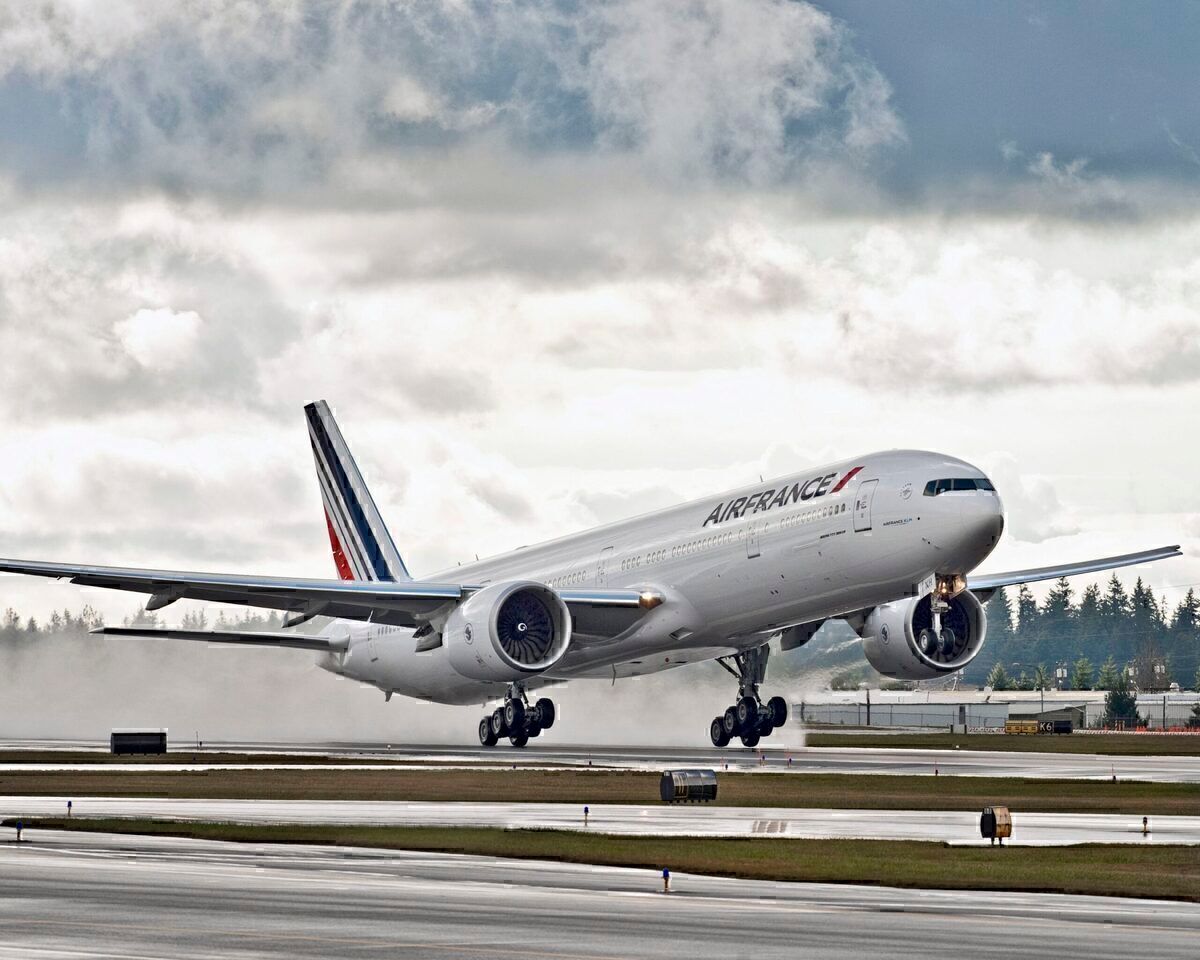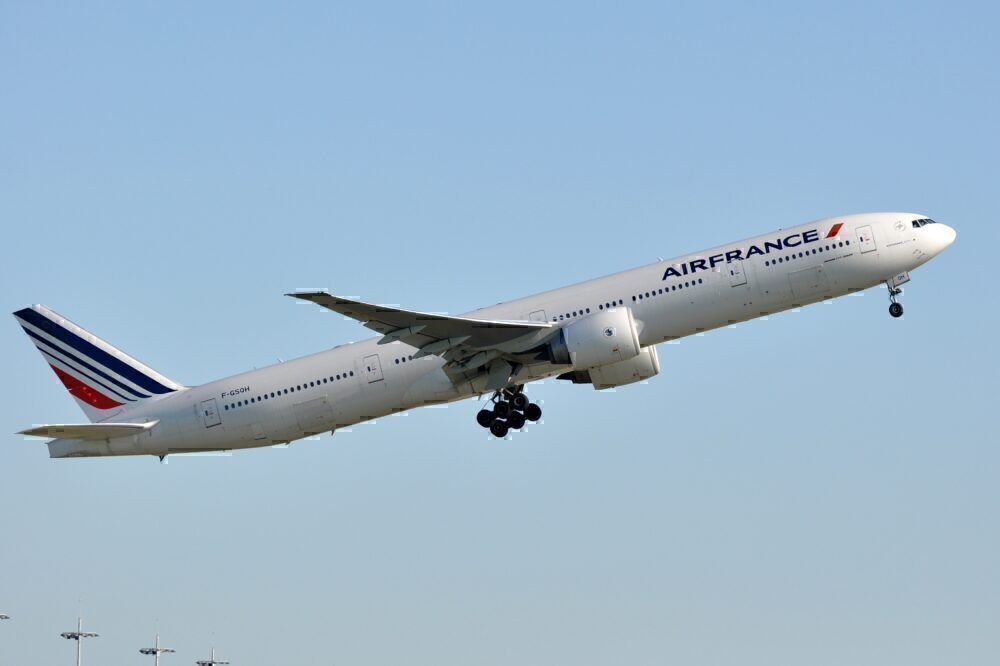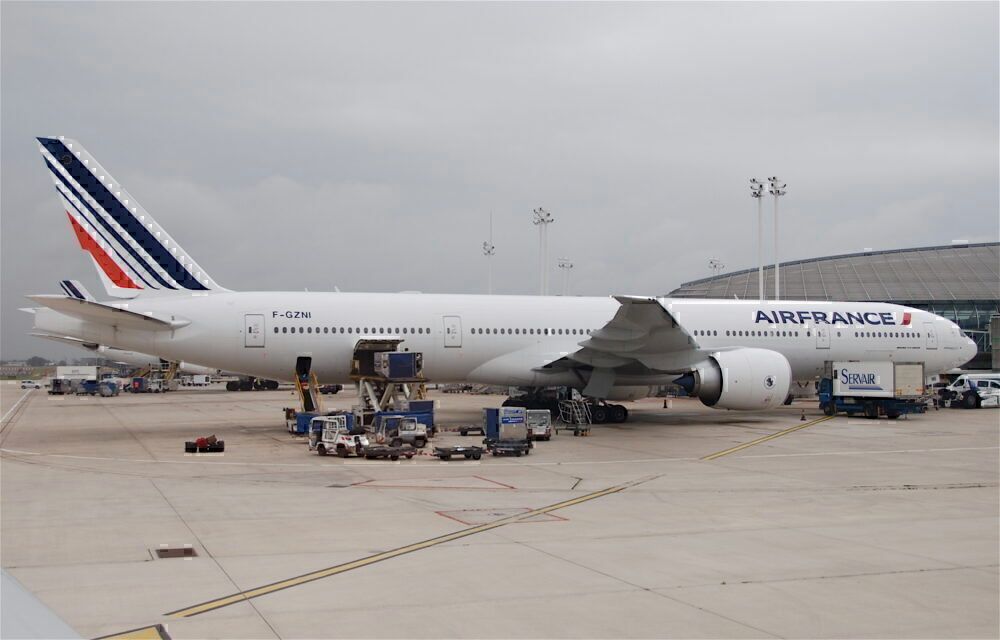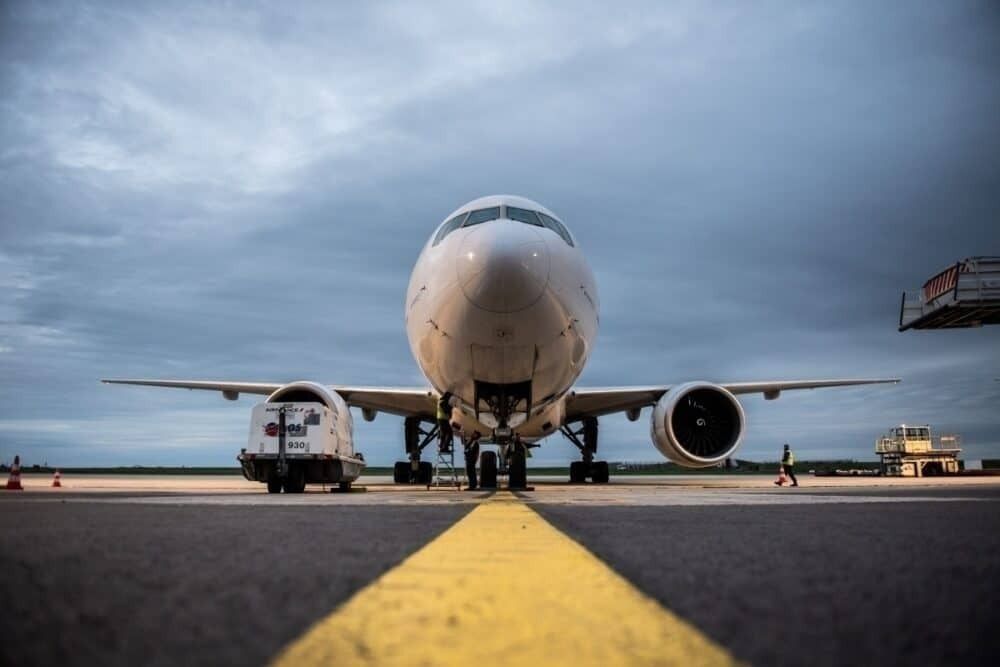An Air France 777-300ER was diverted to Goose Bay, Canada, after receiving a smoke indication in the cargo hold. The plane was making its way from Montrèal to Paris when the incident occurred, forcing an emergency landing. The aircraft landed safely and no passengers or crew were injured. It was later found that the indication was false.
The incident
The aircraft involved in the diversion is a 15.8-year-old Boeing 777-300ER, with registration F-GSQH, delivered to Air France in 2005, according to Planespotters.net. The plane was scheduled to fly from Montrèal to Paris Charles De Gaulle on Friday (October 16th) when the incident occurred.
The aircraft took off from Montrèal at 19:35 local time as AF347, flying eastbound toward Newfoundland, according to FlightAware. Around an hour and 45 minutes into the flight, shortly after entering the Atlantic at 38,000 feet, the crew received a forward cargo smoke indication.
The indication forced the crew to make a turn back towards Canada and diverting to the nearest airport of Goose Bay (YYR). The aircraft declared an emergency and requested that emergency services be deployed. The aircraft successfully landed at 23:21 local time, 2 hours and 45 minutes after takeoff. Incident information is sourced from The Aviation Herald.
No smoke
The aircraft has 100 passengers onboard, a relatively light load for the premium-heavy 296 seat 777. All passengers safely disembarked and no injuries of any kind were reported. Upon inspection after landing, the ground crew found no indication of smoke or fire near the forward cargo hold. The indication was later ruled as false.
For the passengers stuck in Goose Bay, Air France found a quick resolution. Air France 349 was scheduled to also leave from Montrèal to Paris the same night at 22:25 local time. AF349 made a stop at Goose Bay to pick up passengers from AF347, allowing them to return just 7.5 hours later than planned.
Safety first
While the indication did turn out to be false, and the crew did not report any odor or smoke except for the indication, safety remains paramount. Pilots are trained to divert at the first sign of possible trouble, especially on intercontinental flights where could be few or no nearby diversionary airports.
The plane will likely now undergo maintenance in Paris to understand what went wrong with the smoke sensor. Issues with the smoke sensor can cause crews to miss fires, resulting in a possible catastrophe.
Luckily the passengers on AF347 were able to quickly return to Paris thanks to another flight soon after. Air France has been slowly increasing its international capacity in the last few months, especially between Canada and the EU since the latter allows for travel without quarantine for Canadian travelers.
Has your flight ever been diverted? Let us know your experience in the comments.




